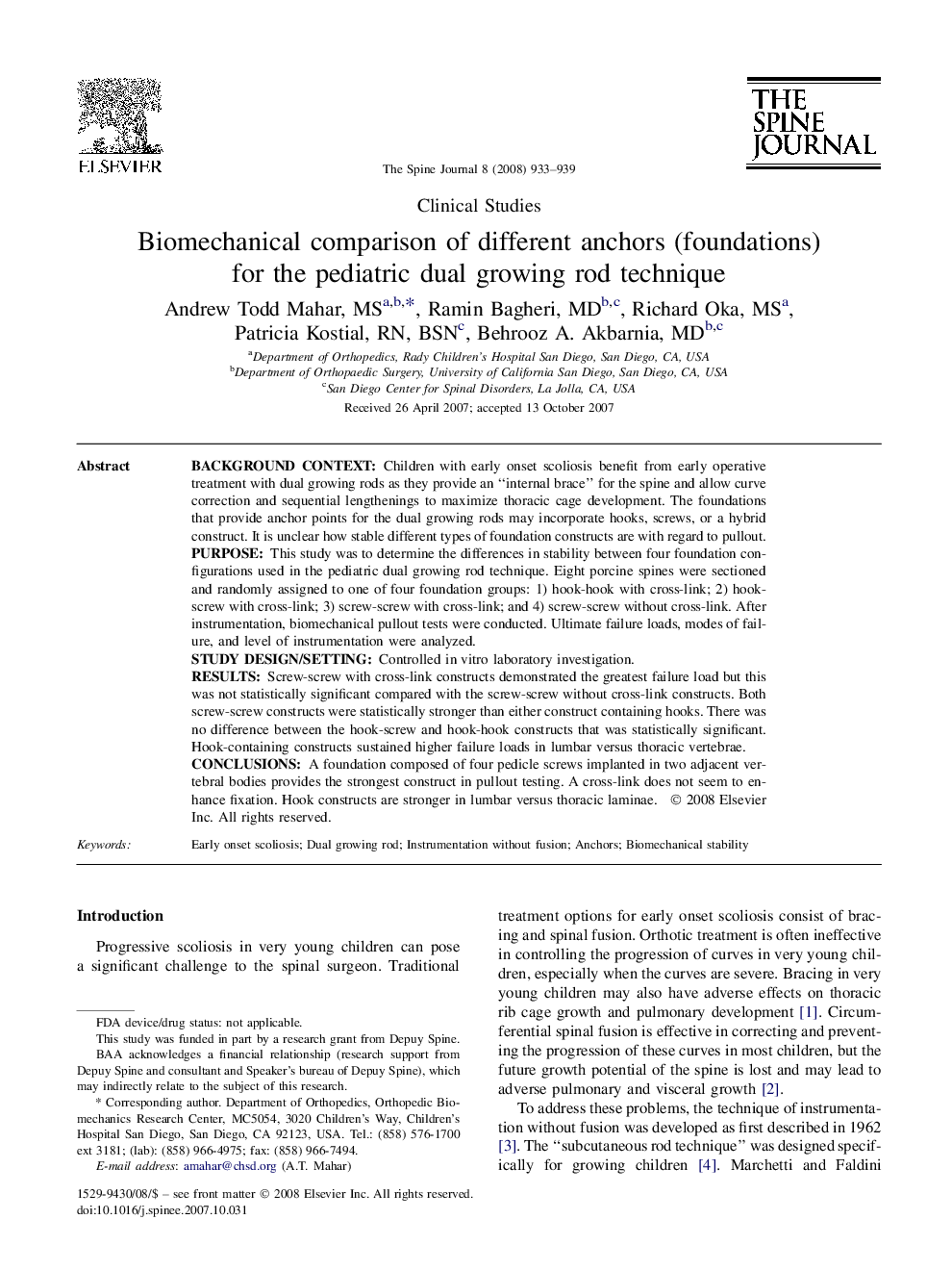| کد مقاله | کد نشریه | سال انتشار | مقاله انگلیسی | نسخه تمام متن |
|---|---|---|---|---|
| 4099819 | 1268658 | 2008 | 7 صفحه PDF | دانلود رایگان |

Background contextChildren with early onset scoliosis benefit from early operative treatment with dual growing rods as they provide an “internal brace” for the spine and allow curve correction and sequential lengthenings to maximize thoracic cage development. The foundations that provide anchor points for the dual growing rods may incorporate hooks, screws, or a hybrid construct. It is unclear how stable different types of foundation constructs are with regard to pullout.PurposeThis study was to determine the differences in stability between four foundation configurations used in the pediatric dual growing rod technique. Eight porcine spines were sectioned and randomly assigned to one of four foundation groups: 1) hook-hook with cross-link; 2) hook-screw with cross-link; 3) screw-screw with cross-link; and 4) screw-screw without cross-link. After instrumentation, biomechanical pullout tests were conducted. Ultimate failure loads, modes of failure, and level of instrumentation were analyzed.Study design/settingControlled in vitro laboratory investigation.ResultsScrew-screw with cross-link constructs demonstrated the greatest failure load but this was not statistically significant compared with the screw-screw without cross-link constructs. Both screw-screw constructs were statistically stronger than either construct containing hooks. There was no difference between the hook-screw and hook-hook constructs that was statistically significant. Hook-containing constructs sustained higher failure loads in lumbar versus thoracic vertebrae.ConclusionsA foundation composed of four pedicle screws implanted in two adjacent vertebral bodies provides the strongest construct in pullout testing. A cross-link does not seem to enhance fixation. Hook constructs are stronger in lumbar versus thoracic laminae.
Journal: The Spine Journal - Volume 8, Issue 6, November–December 2008, Pages 933–939